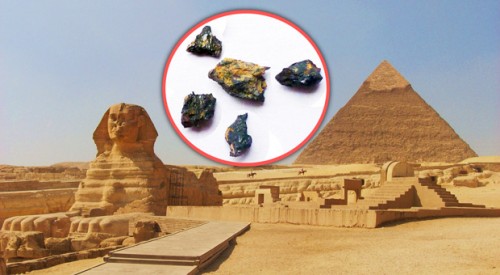A newly published study sounds like the beginning of a great sci-fi story: A stone recovered in 1996 in Southern Egypt is puzzling scientists because, although definitely from outer space, it doesn’t look like any regular meteorite or asteroid, and the latest analysis shows that the micro-minerals within are unlike anything we have ever encountered here or in the cosmos.
Regular meteorites are made mostly of silicon with a bit of carbon (similar to the composition of our planet) but the Hypatia stone, as it is called, is the opposite, as reported in the journal Geochimica et Cosmochimica Acta.
The stone has a huge amount of carbon compounds and almost all of them have transformed into micro-diamonds. Some of the carbon compounds are of particular interest because they are known as polyaromatic hydrocarbons (PAH), a major component of interstellar dust. And there is even more unusual stuff, like pure aluminum.
"The aluminum occurs in pure metallic form, on its own, not in a chemical compound with other elements," first author Georgy Belyanin, from the University of Johannesburg, said in a statement. "As a comparison, gold occurs in nuggets, but aluminum never does. This occurrence is extremely rare on Earth and the rest of our solar system, as far as is known in science."
The stone also features a mineral called moissanite, a silicon carbide compound, in an unexpected form and nickel-phosphorus grains with very little iron, another combination never observed on Earth before. All these factors suggest that the object’s formation predates the origin of the Solar System. The stone just doesn’t fit with what we know of our local (space) rocks.
"What we do know is that Hypatia was formed in a cold environment, probably at temperatures below that of liquid nitrogen on Earth (-196 Celsius)," Professor Jan Kramers, the lead researcher on the project, explained. "In our solar system, it would have been way further out than the asteroid belt between Mars and Jupiter, where most meteorites come from."
"Comets come mainly from the Kuiper Belt, beyond the orbit of Neptune and about 40 times as far away from the sun as we are," he continued. "Some come from the Oort Cloud, even further out. We know very little about the chemical compositions of space objects out there. So our next question will dig further into where Hypatia came from."
We look forward to that. In the meantime, if you're curious, here's a fun fact: the stone was named after Hypatia of Alexandria, the great philosopher, mathematician, and astronomer of the fourth century. She was murdered and dismembered by a mob of Christian monks likely due to Cyril of Alexandria’s jealousy. He was later made a saint by the Catholic Church.





